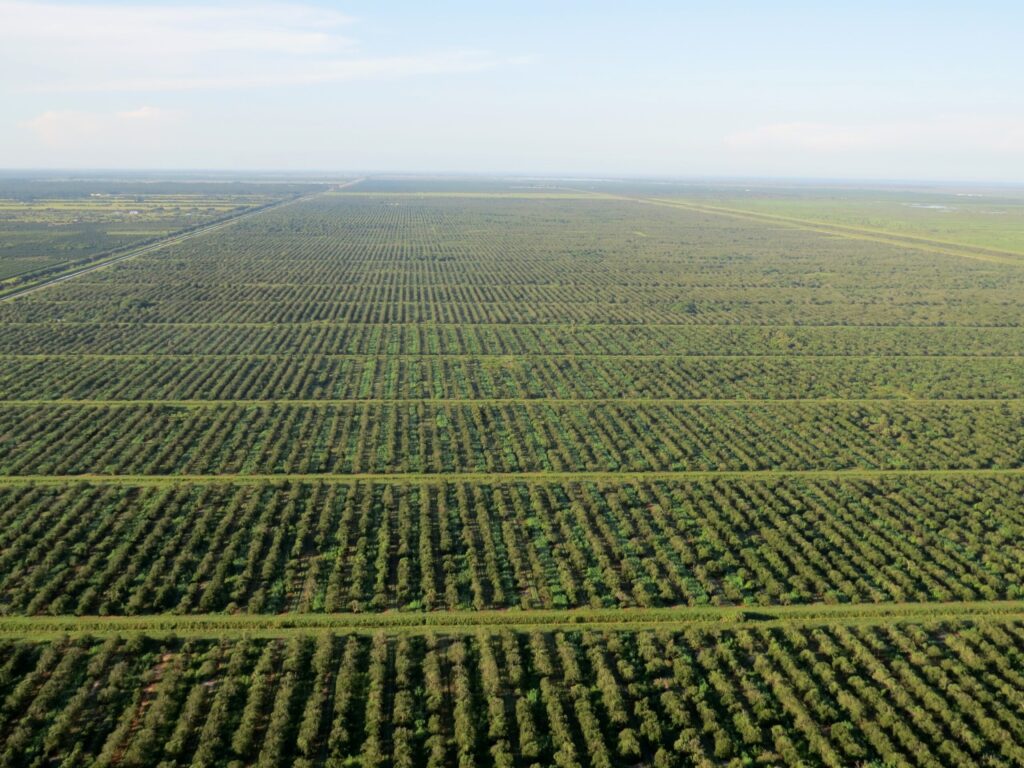USDA Revises Citrus Forecast, but Growers Taking It In Stride
by TERESA SCHIFFER
In December, the USDA revised its citrus season forecast for Florida, and the news wasn’t good. The projected production dropped about 2 percent from October’s initial forecast, which translates to one million fewer boxes of Hamlin and Navel oranges from the Sunshine State. That puts the total number of expected boxes of oranges at
56 million boxes, a significant drop from the 68 million boxes produced last season.
So how is this news affecting growers? Those who have been in the industry for a while aren’t pleased, but they aren’t too worried, either. They know that citrus, like any other crop, goes through its highs and lows, and while this may be a low period for the growers, many are willing to hang in there and see it through with an optimistic faith that the state’s iconic oranges will rebound in due time.
The main culprit behind the decline in expected production is an unexpected fruit drop that occurred early in the season. Although the exact cause of the drop is unknown, some growers suspect that unseasonably warm weather induced the loss since the entire state was affected to some degree.
“We had a higher drop rate than we’ve had in a couple of years, and it was industry-wide,” says Vic Story of the Story Companies. “I think it was related to the warm weather in the fall. We’ve had some cool weather, but it would have been welcome sooner. I think the trees were a little confused about the weather, and the greening has continued to play havoc on the trees.”
Greening continues to be a serious problem for Florida’s citrus growers. The bacteria that causes Huanglongbing, also known as HLB or citrus greening, weakens the trees and negatively impacts everything from the root system to the fruit. This makes the trees more vulnerable to other conditions that can cause a decrease in production, such as a massive fruit drop due to a variance in weather patterns.
The psyllid problem doesn’t seem to be improving much, either. Psyllids are the small plant-sucking insects that act as a vector for spreading the greening pathogen. Controlling psyllids is an integral part of overcoming citrus greening. At one point, many grove operators were spraying for psyllids on a monthly basis in an effort to combat the spread of the greening disease.
Unfortunately, when production drops and prices fall, growers have a hard time justifying the financial expenditure of so frequently spraying their groves for psyllid control. Some of the smaller growers who don’t have big contracts got very low prices for their produce at the beginning of last season, leading them to cut back on their grove care. This contributed to a decrease in psyllid control as well. Natural predators can be a useful agent for diminishing psyllid populations, but they tend to be cyclical in their effectiveness, and this past year they were at a low point in that natural cycle.
While researchers continue to search for a cure, or at least a solution, to the issue of greening, growers like Ellis Hunt of Hunt Brothers Inc. will continue to persevere. Proper nutrition and adequate watering is essential to helping infected trees maintain a sufficient level of health to continue producing fruit.
“We cannot buy anything this afternoon and spray it on an infected tree tomorrow that’s going to cure it,” explains Hunt, a third-generation citrus grower. “We just have to live with it, and with more frequent nutrition, and making sure you’re giving them water when they need it, and really taking care of the tree at the moment, that’s all you can do.”
Not everything is as bleak as it sounds though – with the world focused on health and immunity concerns due to the global coronavirus crisis, demand for orange juice soared. Oranges contain a compound called hesperidin which has been found to provide some protection against respiratory diseases. Most Florida oranges become juice, so this was good news for our growers, who were able to cash in on the premium prices later in the season.
To keep interest in consuming the classic, healthy beverage high, the Florida Citrus Commission voted to raise the box tax that growers pay on each 90-pound box of oranges from 7 cents to 12 cents per box in order to fund a $9.8 million worldwide marketing campaign. Florida’s citrus growers are understandably quite proud of their products and have a history of taking care of themselves and each other through the good times and the not-so-good times. Growers tend to support the increased tax so as to maintain consumer enthusiasm in the tasty, nutritious citrus they produce.
Florida citrus may be in a bit of a slump right now, but don’t expect things to stay this way. Those who profit when the inevitable rebound occurs will be those who didn’t give up on the industry when things got rough.
Hunt sums it up this way: “Eventually, our researchers and scientists are going to find something that will make a difference, and if you don’t have trees in the ground and you’re not actively trying to grow citrus, then you’re not going to be in a position to capitalize on something that will make a difference. You have to be in the game, you’ve got to be swinging the bat to hit a home run. You can’t be in the stands.”

